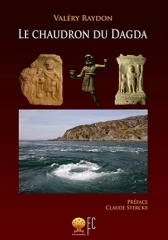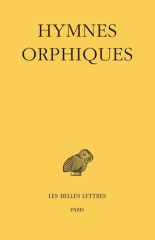Valéry Raydon, Le Chaudron du Dagda, 2015, Marseille, Terre de Promesse, 173 p.
Dans cet l'ouvrage, Valéry Raydon se propose d'expliquer la symbolique du chaudron du Dagda, l'un des trésors des Túatha Dé Danann, les dieux irlandais. Après avoir présenté et analysé l'objet principal de l’étude, l'auteur le met en relation avec des récipients mythologiques ou épiques équivalents (la baignoire d’Ainge fille du Dagda, le sac de la galloise Rhiannon, le Corrbolg de Manannán mac Lír, le chaudron de Cormac mac Airt, celui d'Eochaidh Buidhe, etc.), en tant que contenants culinaires ou aqueux aux propriétés extraordinaires (inexhaustibilité, variation de volume selon le niveau des marées, cuisson dépendant de vérités énoncées) ; les lois irlandaise régissant cet ustensile culinaire, les rituels (l'intronisation du roi de Tirconnell rapportée par Giraud de Barri) et les textes hagiographiques (concernant Brigide, Moling et Patrick) où il a un rôle-clé et les éléments toponymiques assimilés ou mis en relations avec des chaudrons (maelströms côtiers ou océaniques, Mag Muirthemne, cuves fluviales). Comparant ces faits avec ceux rattachés au dieu gaulois Sucellus, que l'auteur, à la suite de Claude Sterckx, voie comme un équivalent continental du Dagda1, V. Raydon nous offre une lecture polysémique de ce chaudron (chaudron d'abondance, de souveraineté, de répartition, de vérité) qu'il met en rapport avec d'autres attributs du dieu (sa massue/fourche, sa cuillère/louche, sa rote), qui vient enrichir la compréhension de ce dieu souverain Irlandais et de son homologue gaulois.
Il s'agit là d'une brillante démonstration essentiellement interne au matériel celtique, en particulier insulaire. Elle aurait pu être enrichie par davantage de comparaisons avec d'autres traditions indo-européennes. Par exemple le sac en peau de grue pourrait être rapproché du kursa des rituels hittites, lui-même rapproché de la toison d'or et de l'égide des Grecs2. De même, l'auteur ne considère toujours pas le lien fait par C. Sterckx entre le Dagda, Sucellus et le dieu jupitérien des Gaulois3. Cela est dommage, car il aurait pû ainsi faire le lien avec un attribut de Zeus, l'égide, qui, si elle n'est pas un contenant, est une peau qui provient de la même créature (vue parfois comme une nymphe transformée) que la cornucopia à laquelle est comparée le chaudron du Dagda. En outre, lorsqu'il compare la rencontre du Dagda et de la Morrígán à celle du dieu Thor et de la géante Gjalp, n'est-il pas intéressant que Thor, autre dieu manieur d'une arme contondante proche du maillet du Dagda et à l'appétit gargantuesque, est le dieu scandinave de l'orage ? Enfin, les maelströms celtiques peuvent être rapprochés de la source cosmique Hvergelmir, « le chaudron hurlant » qui, à l'inverse des premiers, n'est pas un tourbillon où se concentre différents courants, mais une source bouillonnante d'où part les rivières primordiales. Dans cette optique, il est dommage qu'aucune comparaison, même celtique, ne soit faite avec le concept de Feu dans l'Eau et la source cosmique qui le contient.
En dépit de ces quelques réserves, il s'agit d'une étude de très grande importance sur la compréhension de la théologie du Dagda et de son probable homologue continental Sucellus, à travers l'analyse de leurs attributs.
Guillaume Oudaer
1 C. Sterckx, Taranis, Sucellos et quelques autres: le dieu souverain des Celtes, de la Gaule à l’Irlande, 3 vols, Mémoires de la Société Belge d'Études Celtiques 22, 23, 24, Bruxelles: Société Belge d’Études Celtiques, 2005.
2 V. Haas, « Jason Raub des goldenen Vliesses im Lichte hethitischer Quellen », Ugarit-Forschungen, 7, 1975, pp. 227-233. C. Watkins, « Homer and Hittite Revisited I : in Style and Tradition », Studies in Honor of Wendell Clausen. Ed. P. Knox and C. Foss, 1998, pp.201–11. J. N. Bremmer, « The Myth of the Golden Fleece », Journal of Ancient Near Eastern Religion, 6, 2006, pp. 9-38.
3 V. Raydon, « Le Dagda, dieu de l'orage du panthéon irlandais ? Un écueil du comparatisme interceltique », Dialogue d'Histoire Ancienne, 39, 2013, pp. 75-105.

